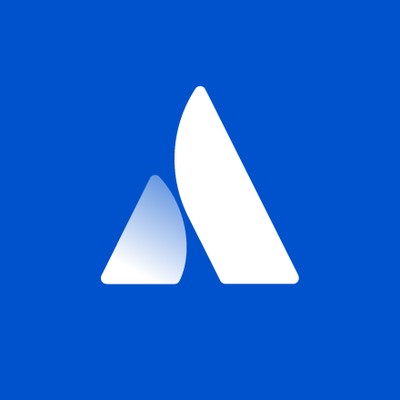Navigating the Digital Landscape: The Rise of Domestic Solutions in Remote Work
January 30, 2025, 4:34 am
In the world of remote work, the tools we use shape our productivity. The shift to domestic solutions has become a necessity for many teams. This is especially true for the Unix team, which spans across cities in Russia. They recently transitioned to a homegrown platform called Kontur Talk, or ktalk. This article explores their experience, highlighting the strengths and weaknesses of this tool in the context of modern communication needs.
The Unix team is a mosaic of talent. Colleagues connect from cities like Saint Petersburg, Moscow, and Vladivostok. Each location brings its own flavor, but the need for seamless communication is universal. With diverse operating systems in play—Mac, Linux, Windows—the choice of a reliable communication tool is crucial. Kontur Talk emerged as the chosen solution. But how does it stack up?
Notifications about incoming calls are another area for improvement. The current design—a narrow strip in the corner—can easily be overlooked. A more prominent alert would enhance usability. It’s like trying to hear a whisper in a crowded room; clarity is key.
In conclusion, the transition to domestic solutions like ktalk reflects a broader trend in remote work. Teams are seeking tools that not only function well but also resonate with their unique needs. Ktalk has its strengths, particularly in sound quality and screen sharing. Yet, it also faces challenges that need addressing. As teams continue to adapt, the tools they use will play a pivotal role in shaping their success. The journey is ongoing, and the landscape of remote work is ever-changing.
The Unix team is a mosaic of talent. Colleagues connect from cities like Saint Petersburg, Moscow, and Vladivostok. Each location brings its own flavor, but the need for seamless communication is universal. With diverse operating systems in play—Mac, Linux, Windows—the choice of a reliable communication tool is crucial. Kontur Talk emerged as the chosen solution. But how does it stack up?
Sound Quality: The Heartbeat of Communication
Sound quality is paramount in any communication tool. In ktalk, the audio clarity is impressive. It’s like a well-tuned instrument, resonating perfectly during long meetings. Unlike other platforms that struggle with noise cancellation, ktalk delivers crisp sound without the need for complex settings. This is vital for teams that spend hours on calls. Good sound is not just a feature; it’s a lifeline.Screen Sharing: A Window to Collaboration
Screen sharing is another cornerstone of effective remote work. In ktalk, this feature performs well. Users can share their screens easily, allowing for a collaborative atmosphere. However, there are limitations. Sharing a large screen on a smaller device can be challenging. It’s like trying to view a mural through a keyhole. While the functionality is solid, the user experience could be enhanced with better scaling options.Control Transfer: A Helping Hand
The ability to transfer control during meetings is a handy feature. It allows one participant to take the reins, guiding others through presentations or troubleshooting. This function works smoothly in ktalk, providing a sense of shared responsibility. It’s like passing the baton in a relay race—everyone knows their role.User Experience: The Good and the Bad
While the core functionalities of ktalk shine, the user interface presents some challenges. For instance, the process of initiating calls differs from other platforms. Users must create a room before inviting others, which can feel cumbersome. It’s a detour when a straight path would suffice.Notifications about incoming calls are another area for improvement. The current design—a narrow strip in the corner—can easily be overlooked. A more prominent alert would enhance usability. It’s like trying to hear a whisper in a crowded room; clarity is key.
Meeting Dynamics: The Flow of Ideas
Regular meetings with the team have become a staple. Ktalk handles calls with around twelve participants well. Notifications about upcoming meetings are a thoughtful touch, ensuring no one is left behind. The chat feature is also user-friendly, allowing for easy information sharing. However, the limitation of showing only a few participants’ avatars can lead to confusion. A simple list format could improve clarity.Complex Scenarios: Navigating Challenges
In more complex scenarios, such as emergency response meetings, ktalk shows both strengths and weaknesses. The ability to create separate rooms for focused discussions is beneficial. However, the interface can become cluttered, making it hard to track who is present. The reliance on avatars can hinder quick identification, especially when not everyone has a profile picture.Documentation: The Unsung Hero
Documentation is often overlooked in the rush of daily tasks. Yet, it plays a crucial role in ensuring everyone is on the same page. Ktalk’s integration with documentation tools can streamline this process. By linking meeting notes and action items directly within the platform, teams can maintain a clear record of discussions. It’s like having a map in uncharted territory—essential for navigating complex projects.The Future of Remote Work Tools
As remote work continues to evolve, the demand for effective communication tools will only grow. Ktalk is a step in the right direction, offering a robust platform for collaboration. However, it must adapt to user feedback. Enhancements in user interface design, notification systems, and documentation integration will elevate the experience.In conclusion, the transition to domestic solutions like ktalk reflects a broader trend in remote work. Teams are seeking tools that not only function well but also resonate with their unique needs. Ktalk has its strengths, particularly in sound quality and screen sharing. Yet, it also faces challenges that need addressing. As teams continue to adapt, the tools they use will play a pivotal role in shaping their success. The journey is ongoing, and the landscape of remote work is ever-changing.
